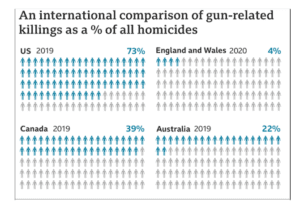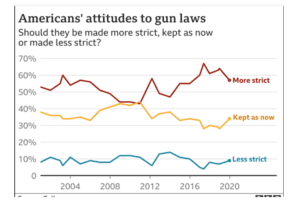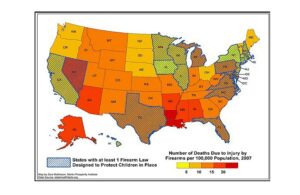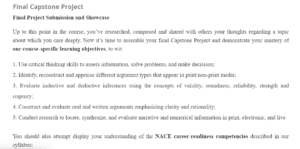Gun Control Laws
The increase in cases of gun-associated deaths led to the push for gun control regulations. With the increase in the number of gun possessions due to the legalization of gun possession, cases of deaths from mass shootings and suicides have increased. Accordingly, gun control regulations were put in place to reduce mass shootings and other gun-related killings.

Figure 1 (“How does the US compare with other countries?”, 2019)
The figure above represents high percentages of gun-related killings, indicating the US had the highest number of cases. Subsequently, the gun control regulations were not accepted as people spoke up about the cons of the regulation. Some of the cons of gun control regulations include infringing upon the right to self-defence and denying people the sense of security brought upon by their firearms. An invasion of privacy as background checks must be carried out to purchase firearms. Also, other individuals have spoken up about the pros of gun control regulations. The pros include the enforcement of protection of women from stalkers and violent spouses and the decrease in gun-related deaths attributed to the gun control regulations (“Gun Control – Pros & Cons – ProCon.org,” 2020).

Figure 2 (“Who supports gun control”, 2020)
Figure 2 illustrates people’s opinions of gun control regulations. People’s opinions on gun control regulations depend on whether people support the pros or cons of gun control regulations. As indicated in Figure 2, people who associate gun control laws with the cons feel the regulations should be lenient. Additionally, people who associate gun laws with the pros either desire the regulations to remain as they are or should be made stricter.
Subsequently, the more gun control regulations are enforced, the fewer cases of gun-related killings. This fact is supported by the fact that gun-related killings and injuries depend on the gun laws enforced in the States.

Figure 3: gun-related killings and injuries in states (“States with tighter gun control laws have fewer gun-related deaths”, 2017)
From Figure 3, it is evident that gun-related deaths vary with state. The higher the population and gun possessions, the higher the gun-related deaths. Accordingly, the stricter the enforcement of gun laws, the fewer gun-related deaths. Therefore, figure 3 indicates that the more gun laws are enforced, the higher the rate of decrease in gun-related deaths. Furthermore, this fact indicates that the objective of gun control laws of reducing gun-related deaths will decrease with the continuity of the enforcement of gun-related deaths. The decrease in gun-related deaths is associated with the decrease in gun violence associated with mass shootings, suicides and gender violence.
Considering sentence logic:
Gun control regulations reduce gun violence (a) Premise 1
Gun control regulations reduce cases of mass shootings (b) Premise 2
Gun control regulations pose more advantages for states and countries. (c) Premise 3
Applying the logic of conditional sentences, if a, then b will produce a conclusion. Therefore, If gun control regulations reduce gun violence, then Gun control regulations reduce cases of mass shootings.
Applying the logic of conditional sentences, if (b), then (c) will produce a conclusion. Therefore, if gun control regulations reduce cases of mass shootings, then gun control regulations pose more advantages for states and countries.
Applying the logic of conditional sentences, if (a), then (c) (a -> c) will produce a conclusion. Therefore, the conclusion is if gun control regulations reduce gun violence, then gun control regulations pose more advantages for states and countries,
The NACE competencies represent characteristics important for professionalism. The three most suitable competencies include thinking critically and solving problems, effectively communicating in written and oral prose, and acting professionally and ethically. These three competencies bring out the critical skills of assessing information, solving problems, and making decisions. The ability to think critically, solve problems, communicate effectively, and act professionally and ethically contributes to assessing information and making decisions, thereby solving problems.
In conclusion, critical thinking skills enable people to assess the information provided and come up with solutions that solve problems. In the gun control regulation case, the laws pose more advantages in society with reduced gun violence and cases of mass shootings, protecting people in societies.
References
Gun Control – Pros & Cons – ProCon.org. (2020). Retrieved 27 February 2021, from https://gun-control.procon.org/
How does the US compare with other countries? (2019). Retrieved 21 May 2021, from https://ichef.bbci.co.uk/news/976/cpsprodpb/B138/production/_117886354_gun_related_crimes2_640-nc.png
States with tighter gun control laws have fewer gun-related deaths. (2017). Retrieved 22 May 2021, from https://cdn.vox-cdn.com/thumbor/96sfmSw7l8MpeekRlscC5iThhGM=/0x0:550×425/920×0/filters:focal(0x0:550×425):format(webp):no_upscale()/cdn.vox-cdn.com/uploads/chorus_asset/file/9371423/gun_control_vs_deaths.jpg
Who supports gun control. (2021). Retrieved 21 May 2021, from https://ichef.bbci.co.uk/news/976/cpsprodpb/13CB6/production/_117887018_opinion_v2-nc.png
ORDER A PLAGIARISM-FREE PAPER HERE
We’ll write everything from scratch
Question
Final Capstone Project
Final Project Submission and Showcase
Up to this point in the course, you’ve researched, composed and shared with others your thoughts regarding a topic about which you care deeply. Now it’s time to assemble your final Capstone Project and demonstrate your mastery of our course-specific learning objectives, to wit:

Gun Control Laws
- Use critical thinking skills to assess information, solve problems, and make decisions;
- Identify, reconstruct and appraise different argument types that appear in print/non-print media;
- Evaluate inductive and deductive inferences using the concepts of validity, soundness, reliability, strength and cogency;
- Construct and evaluate oral and written arguments emphasizing clarity and rationality;
- Conduct research to locate, synthesize, and evaluate narrative and numerical information in print, electronic, and live
You should also attempt display your understanding of the NACE career-readiness competencies described in our syllabus:
- Think critically and solve problems;
- Effectively communicate in both written and oral prose;
- Collaborate within a team to produce successful outcomes;
- Utilize information technologies to increase productivity;
- Exercise leadership;
- Act professionally and ethically;
- Take responsibility for personal career management
You will have a choice regarding how (in what medium or modality) you demonstrate both of these skill sets. Depending on your learning style and preference, you may select one of the following three mediums: a tweet, dialogue, or images/charts. It doesn’t matter which medium you select as long as you follow the instructions carefully and attempt to demonstrate the skills outlined above. The Final Capstone Project grading rubric will be used to assess your work, so please read it carefully before you create your project. The length of your submission depends entirely on you. It’s quality, not length, that will determine your grade on the assignment.
An easy way to showcase your grasp of the NACE competencies would be to situate your response in the vocation for which you are preparing. For future nurses, a medical setting (say, a hospital) might be an appropriate context for a #MeToo tweet; for a business student, a dialogue on socially responsible investment decisions could focus on immigration reform; for a future teacher, a graphic presentation that illustrated pertinent data on gun violence in schools might be apt. The choice is yours. The idea is to show your peers how you would use specific critical thinking and problem-solving skills in the vocational field you’re planning on entering. Have fun and be creative!
Here are the specific steps you should follow:
Step #1: Choose one of the three following mediums to initially present your argumentative position or basic thesis.
Choice A asks you to first compose a tweet, such as the Dalai Lama’s tweet found in Unit 11. The tweet should be related to your topic (gun violence, immigration, or #MeToo) and no longer than 280 characters. The tweet should creatively express your thesis.
Choice B asks you to compose a dialogue similar to the one you composed in Unit 2 (remember the argument between Hiro and Angie about whether college was worth the expense and effort?). The dialogue should feature 2-3 characters conversing about your topic (gun violence, immigration, or #MeToo) in which each character presents an argument for or against a position related to the topic. One of the characters should put forward your personal position.
Choice C asks you to create a set of images or charts related to your topic (gun violence, immigration, or #MeToo). Find or create your own images or charts that speak directly your topic. You should have at least 3 images in your collection. Collectively, your images should support your argumentative position.
Step #2: Present your Extended Argument
After you’ve creatively rendered your basic position in the medium of your choice (a tweet, dialogue, or images/charts), do the following:
- Reconstruct your argument in standard form reconstruction (premise 1, premise 2, premise 3, etc., conclusion);
- Evaluate your argument using the criteria best suited to it (for instance, if it’s an inductive generalization or statistical syllogism, use the criteria of sample size, comprehensiveness, and randomness; if it’s a causal argument, ask if its premises sufficiently confirm a correlation between the proposed cause and the proposed effect, and if its premises sufficiently disconfirm plausible alternative conclusions; if it’s an analogical argument, ask if the comparative features are sufficiently similar and if there are enough similarities to justify the comparison; if it’s a deduction, test for validity and the truth of the premises); and
- Visually represent your argument, either as an argument map/diagram (see Unit 2.2 video) or with appropriate symbols (as discussed in Units 10 and 11 on sentential logic);
Step #3: Critical Reflection on NACE Competencies
Review the NACE competencies above. Choose three competencies that you feel are most germane to your current or future career. Reflect upon and discuss meaningfully the relationship of these three competencies to any of the critical thinking skills listed at the start of these instructions.
As always, properly cite in APA style all your scholarly resources, including the text from this course.
Step #4: Share your Final Capstone Project
Post your completed Final Capstone Project in the Final Capstone Project Discussion Forum. Please use a title that includes both your name and your topic (for instance, “Final Capstone Project – Jane Doe #MeToo Tweet). Read and comment on at least two other students’ projects, including one who worked on a different topic.

